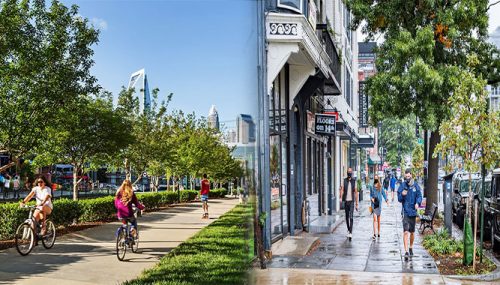Urban planning plays a critical role in shaping the functionality and aesthetics of cities, and one key aspect that is often overlooked is pedestrian flooring. Pedestrian-friendly flooring not only contributes to the overall walkability of urban areas but also enhances safety and accessibility for residents and visitors. In this article, we will explore the importance of pedestrian flooring in urban planning and its impact on creating vibrant and inclusive urban environments.
Enhancing Walkability
Pedestrian-friendly flooring is a fundamental element in enhancing the walkability of urban spaces. It contributes to creating comfortable and inviting pedestrian pathways, encouraging people to walk, jog, or cycle as part of their daily routines. Aesthetically pleasing and well-maintained pedestrian flooring can make walking an enjoyable experience, leading to increased physical activity and improved public health.
Safety and Accessibility
The choice of pedestrian flooring materials and design directly influences safety and accessibility in urban areas. Slip-resistant and level surfaces reduce the risk of accidents and provide a safe environment for pedestrians, including individuals with mobility challenges, parents with strollers, and elderly citizens. Tactile paving and contrasting colors on pedestrian pathways can also aid visually impaired individuals in navigating urban spaces independently.
Aesthetics and Identity
Pedestrian flooring contributes to the overall aesthetic appeal of urban environments and can serve as a means of expressing the cultural and historical identity of a city. Thoughtfully designed and well-maintained pedestrian flooring reflects the character of a city, contributing to a sense of place and identity. From cobblestones to decorative pavers, the choice of pedestrian flooring materials can create a unique urban ambiance that resonates with residents and visitors alike.
Sustainability and Resilience
Incorporating sustainable and resilient materials in pedestrian flooring aligns with broader urban planning goals related to environmental conservation and climate resilience. Permeable paving materials, such as porous concrete or interlocking pavers, can mitigate stormwater runoff and reduce the urban heat island effect. By integrating environmentally friendly pedestrian flooring, urban planners can contribute to the overall sustainability of cities.
Community Engagement and Vibrancy
Well-designed pedestrian flooring can serve as a catalyst for community engagement and the activation of public spaces. Inclusive and inviting pedestrian pathways encourage social interactions and the creation of vibrant public realms. Public squares, promenades, and pedestrian zones with attractive and functional flooring become focal points for community events, cultural activities, and recreational gatherings.
The importance of pedestrian flooring in urban planning cannot be overstated. By prioritizing pedestrian-friendly flooring, urban planners and designers can create cities that prioritize the well-being, safety, and enjoyment of pedestrians. From enhancing walkability and accessibility to contributing to the aesthetic identity and sustainability of urban areas, pedestrian flooring plays a multifaceted role in shaping vibrant, inclusive, and livable cities.
In future urban planning endeavors, the integration of pedestrian-friendly flooring should be a fundamental consideration to foster vibrant public realms and support the diverse needs of urban inhabitants and visitors alike. By recognizing the importance of pedestrian flooring, cities can embrace a human-centric approach to urban design and promote the creation of pedestrian-friendly environments for all.

